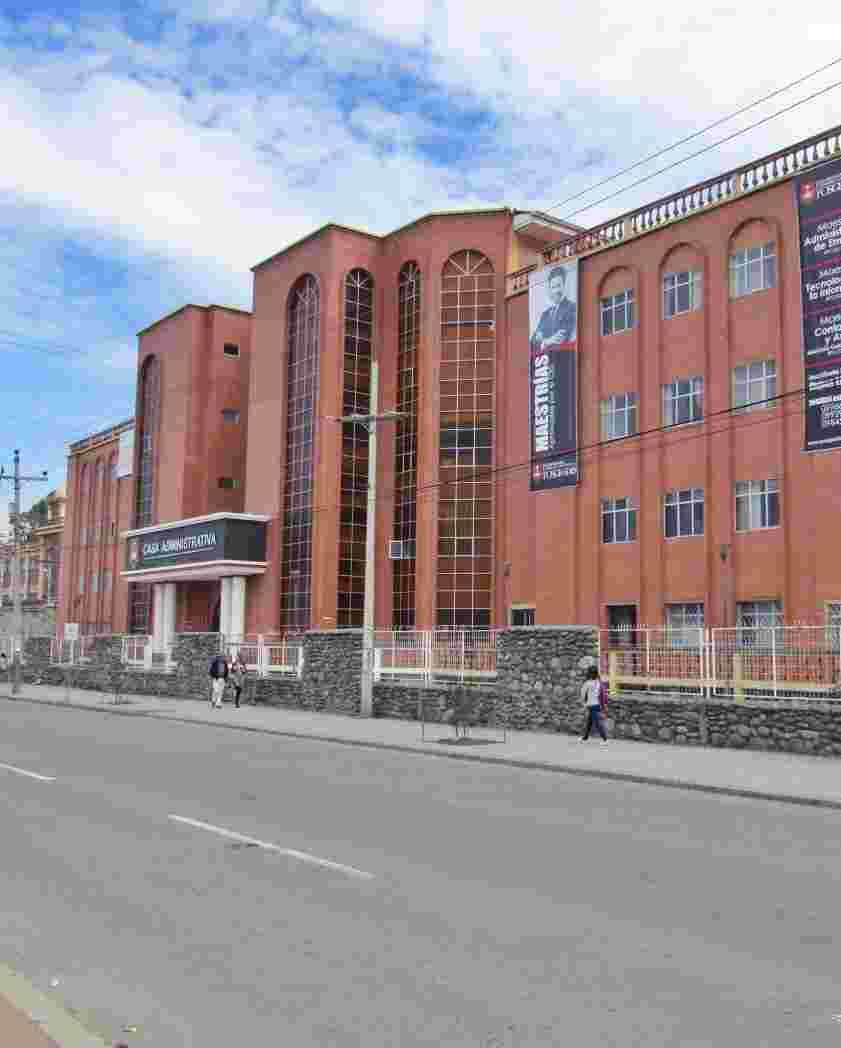Arquitectura
URI permanente para esta comunidadhttps://dspace.ucacue.edu.ec/handle/ucacue/35
Examinar
Examinando Arquitectura por Asesores "León Andrade, Mónica Piedad"
Mostrando 1 - 3 de 3
- Resultados por página
- Opciones de ordenación
Ítem Acceso Abierto Anteproyecto de circuito urbano sostenible: Puertas del Sol, Cuenca(Universidad Católica de Cuenca., 2025) Calle Naula, Mateo Sebastián; León Andrade, Mónica Piedad; 0106200934This research studies the mobility problem and the low presence of green spaces on urban roads in Cuenca, specifically in the zone of “Puertas del Sol”, where vehicle congestion and the disconnection between key points affect the inhabitants' quality of life. This paper proposes an urban circuit that integrates green areas and tactical urban planning strategies to improve connectivity, pedestrian and vehicular safety, and environmental sustainability. The methodology includes a literature review, existing infrastructure analysis, mobility demands evaluation, and information gathering through interviews, and on-site observations. The design of the urban circuit focuses on creating a friendlier and more sustainable environment, incorporating elements such as clear signage, safe pedestrian crossings, bicycle lanes, adequate lighting, and efficient traffic management. In addition, including green spaces is prioritized to reduce pollution, mitigate the heat island effect, and promote a healthier environment. These measures seek to solve connectivity problems, improve the urban image, and promote more orderly and safe mobility. The result is a preliminary project combining functionality, safety, and well-being, offering a comprehensive solution for Cuenca's mobility and sustainability challenges. This innovative approach can serve as a model for future urban interventions, demonstrating that it is possible to balance urban development with the quality of life of citizens and the preservation of the environment.Ítem Acceso Abierto Anteproyecto del parque multifuncional de la Parroquia Guapán(Universidad Católica de Cuenca., 2025) Jadan Chumbay, Leonel Alexander; Sari Sicha, Jhon David; León Andrade, Mónica Piedad; 0106875503; 0107407702This research aims to address the urban-architectural problems that arise in public spaces, such as urban voids, expropriation, insecurity, and unsanitary conditions generated by the abandonment of these areas. The methodology includes a case study research with national and international references analysis to identify relevant design strategies. In addition, on-site analysis is carried out to develop an architectural program that meets the community’s needs. As a result, an integral architectural proposal is obtained and divided into two study areas: one corresponding to intervened spaces and the other to non-intervened spaces. By evaluating each of these areas, dynamic and functional sites are created, focused on recreation, social interaction, and tourism enhancement, which generates a sense of belonging among its inhabitants and helps to improve the economy of the city through the revitalization of places within a landmark of the parish.Ítem Acceso Abierto Mirador Ecológico Cachipamba: diseño sostenible y bioconstrucción para potenciar el ecoturismo(Universidad Católica de Cuenca., 2024) Latacela Lojano , Cristian Fabián; León Andrade, Mónica Piedad; 0302299557The research addresses the inappropriate use of the natural viewpoint in the community of Cachipamba, Azogues, which has generated negative effects on the sociocultural environment and the experience of visitors. The need to transform this infrastructure into something functional and environmentally respectful is justified. The study proposes solutions that promote sustainable tourism, vital for local development, through the rehabilitation of the viewpoint with principles of sustainability and bioconstruction. This will improve residents' quality of life by providing a healthier environment and preserving the natural landscape for future generations, aligning with sustainable development goals. The transformation is anticipated to attract more visitors, generate income, and stimulate the local economy. From a social perspective, the new design will offer recreational and commercial spaces that meet the community's and tourists' needs, enhancing social cohesion. In the scientific realm, the integration of bioconstruction will contribute to the conservation of the natural environment. The objective is to propose a preliminary project from the tourist viewpoint of Cachipamba, applying bio-construction techniques to recover the degraded space and promote sustainable tourism. The study, conducted with 200 participants selected through stratified random sampling, culminated in a design that optimizes the distribution of recreational and commercial areas, enriching the user experience and turning the viewpoint into a model of environmentally responsible infrastructure.




